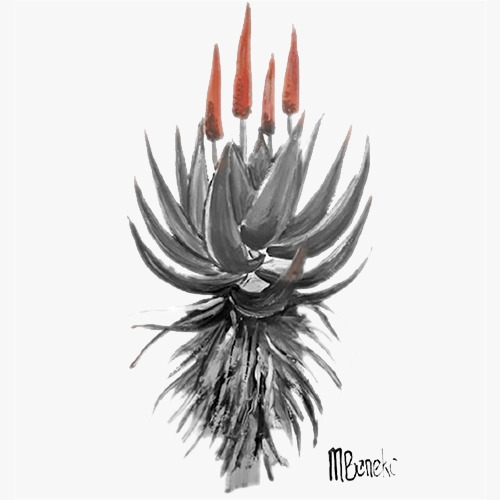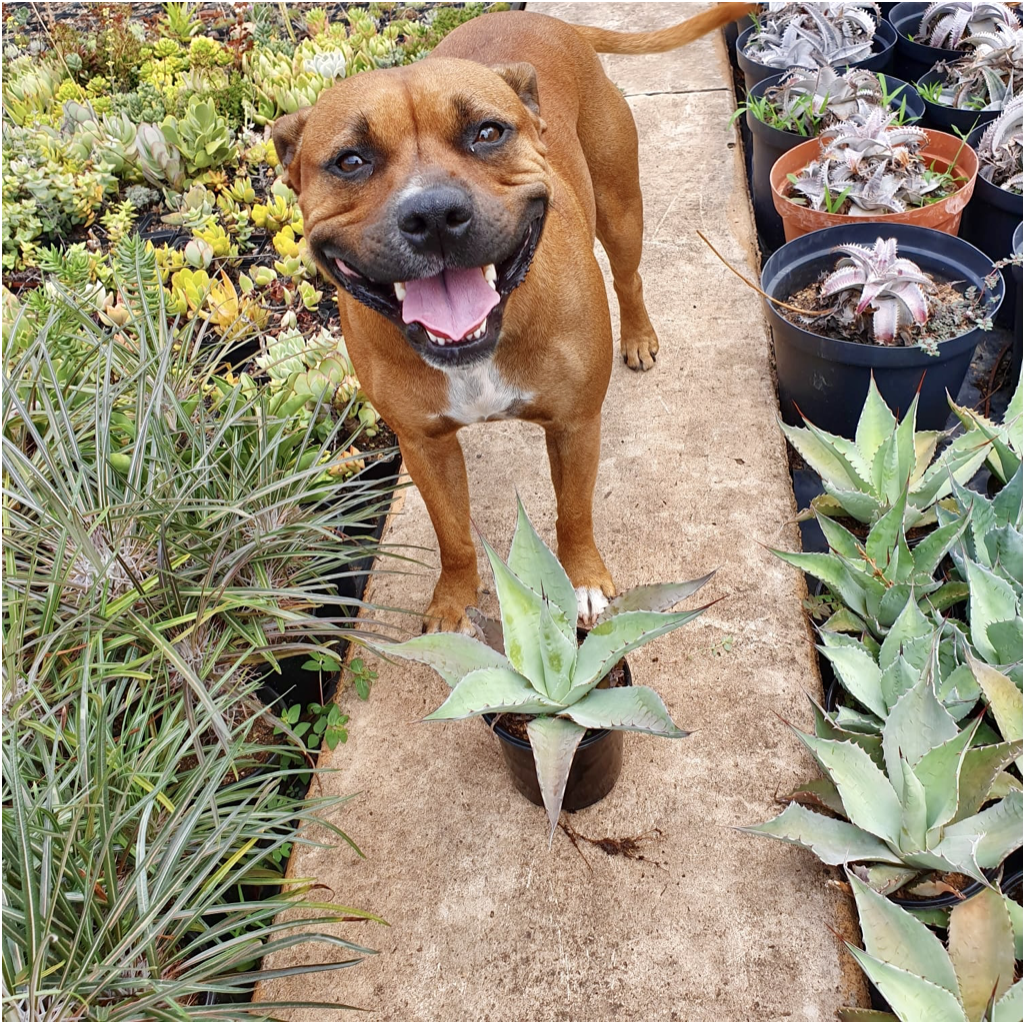Gasteria isomatsu
Gasteria isomatsu – Ox-Tongue
Gasteria isomatsu is a striking succulent known for its fan-shaped rosette of thick, fleshy leaves that are dark green to blue-green in color. The leaves are typically wide, fleshy, and somewhat leathery, with distinctive white spots or tubercles across the surface. These spots can vary in size and pattern but are generally arranged in a somewhat uniform way, giving the plant a speckled, textured appearance. The leaves are typically arranged in a compact rosette and may curl slightly at the edges.
The flowers of Gasteria isomatsu are typically tubular, appearing on a short, thin inflorescence. They are usually pink or red with a green tip and bloom in small clusters, often appearing in late winter to early spring.
Native Range:
This species originates from the coastal regions of South Africa, specifically from the Eastern Cape. Gasteria isomatsu prefers growing in rocky or sandy soils, often in shaded or semi-shaded areas under the cover of larger plants or in crevices. These habitats provide the plant with some protection from harsh sunlight, allowing it to thrive in more moderate conditions.
Care Tips:
- Light: Gasteria isomatsu enjoys bright, indirect light but should be protected from intense direct sunlight, which can scorch the leaves. In low light conditions, the plant will still thrive, making it a great indoor option.
- Water: As with most succulents, this species requires infrequent watering. Water the plant deeply when the soil has completely dried out, but ensure the soil is well-draining to avoid water retention.
- Soil: A well-draining cactus or succulent mix is ideal, possibly with added sand or perlite to improve drainage.
- Temperature: The plant prefers moderate temperatures, ideally between 60-75°F (16-24°C). It can tolerate temperatures down to around 40°F (4°C) but should be protected from frost.
- Fertilizer: Feed lightly during the growing season with a balanced, diluted fertilizer. Avoid feeding during the dormant winter months.
- Propagation: Gasteria isomatsu can be propagated by separating offsets or through leaf cuttings. Allow any cuts to callous over before planting to prevent rot.
Unique and Special:
One special characteristic of Gasteria isomatsu is its adaptability to lower light environments compared to many other succulents, making it an excellent choice for homes or offices with less natural light. Its unique speckled leaf texture and compact size also make it a great option for collectors and succulent enthusiasts looking for a visually appealing, low-maintenance plant. It has a reputation for being quite hardy and resilient in slightly neglected conditions, making it perfect for beginners or those with a busy lifestyle.

